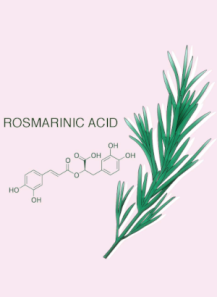Micromul™ Rosmarinic (Microemulsion Rosmarinic Acid)
Cosmetics
Code: 127334
a naturally occurring polyphenolic compound found in herbs such as rosemary, lemon balm, and perilla. Owing to its antioxidant, anti‐inflammatory, and antimicrobial properties, research has investigated its benefits when applied topically
Cart
No products
Subtotal:
0.00
Total
0.00
THB



